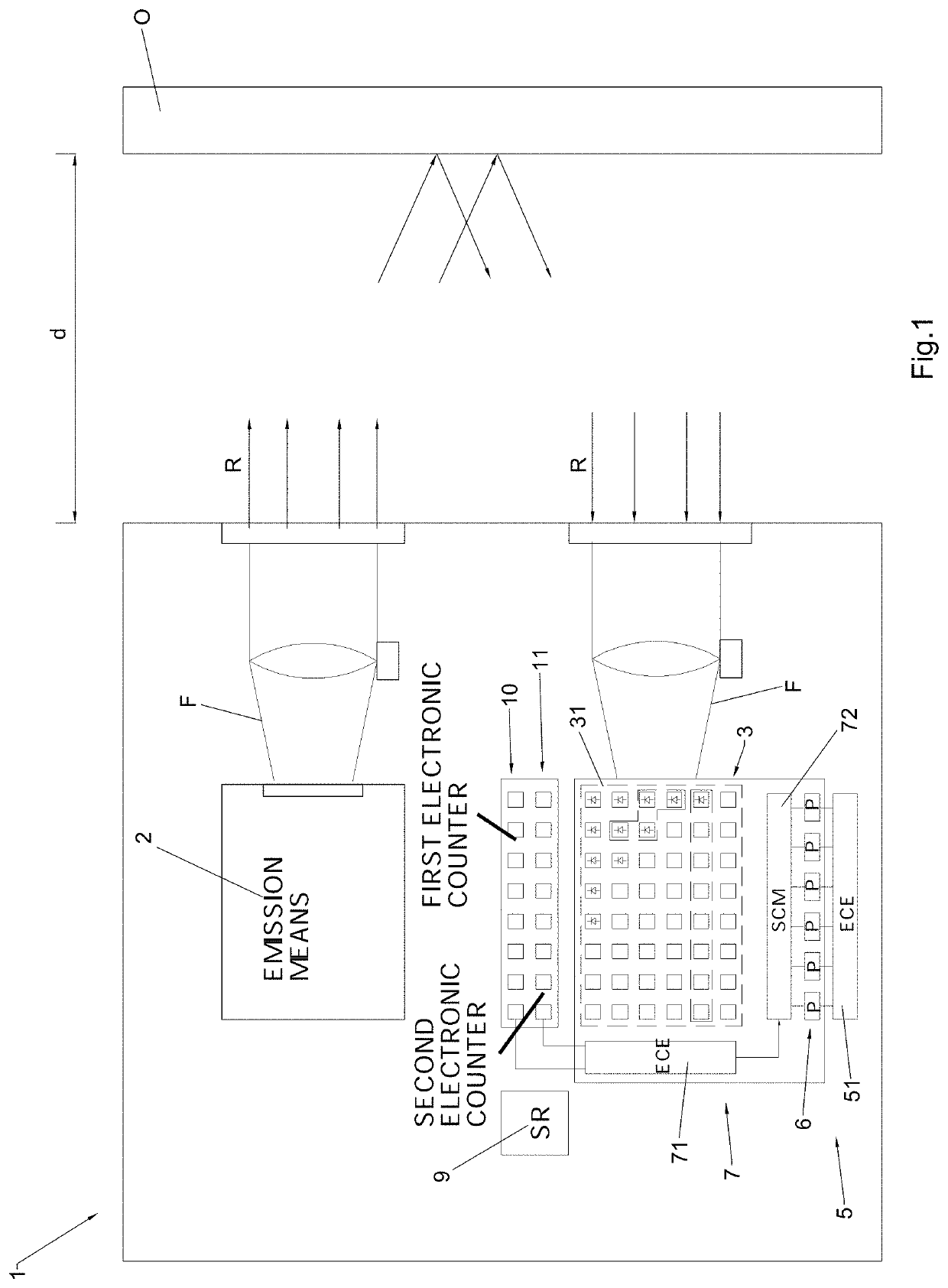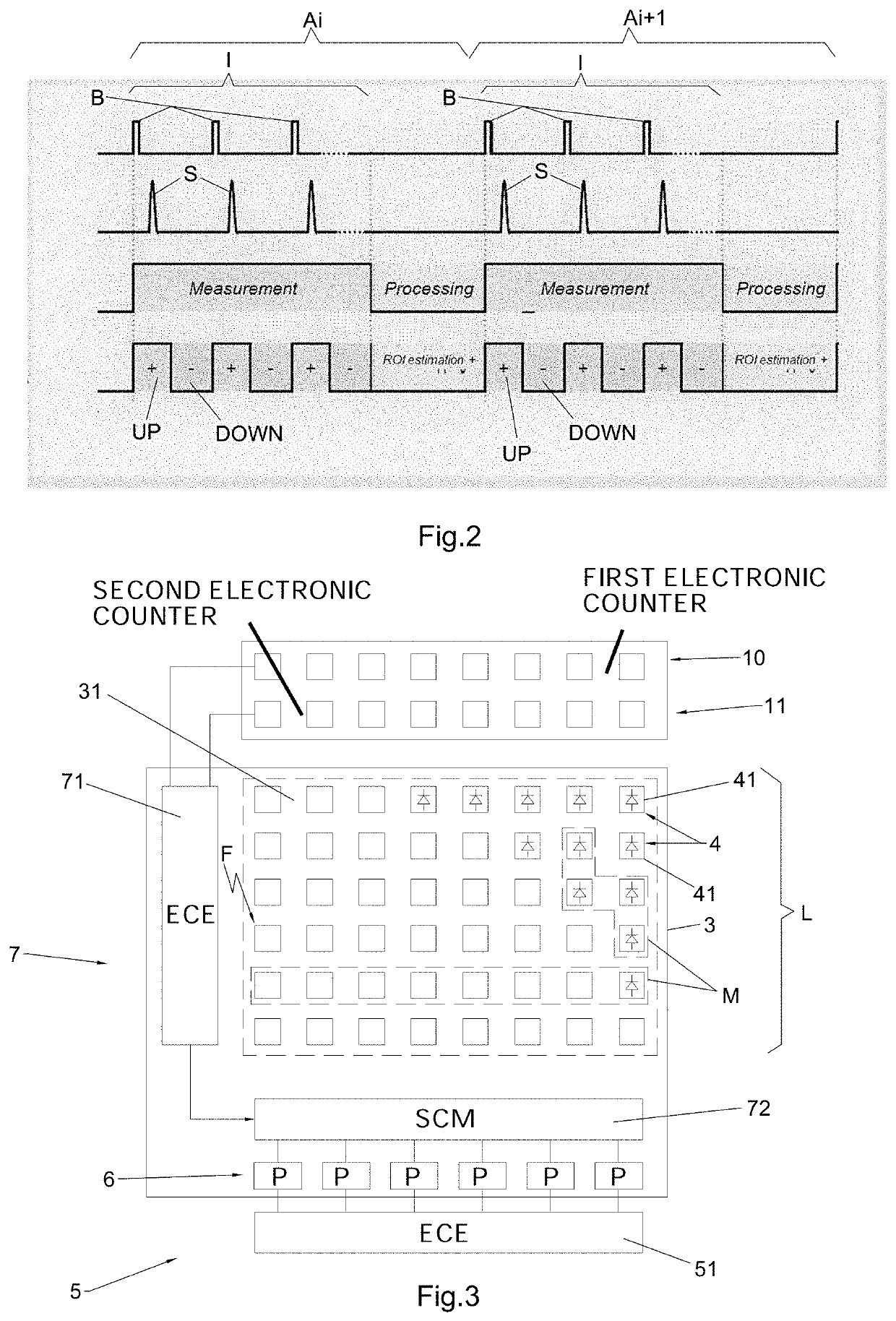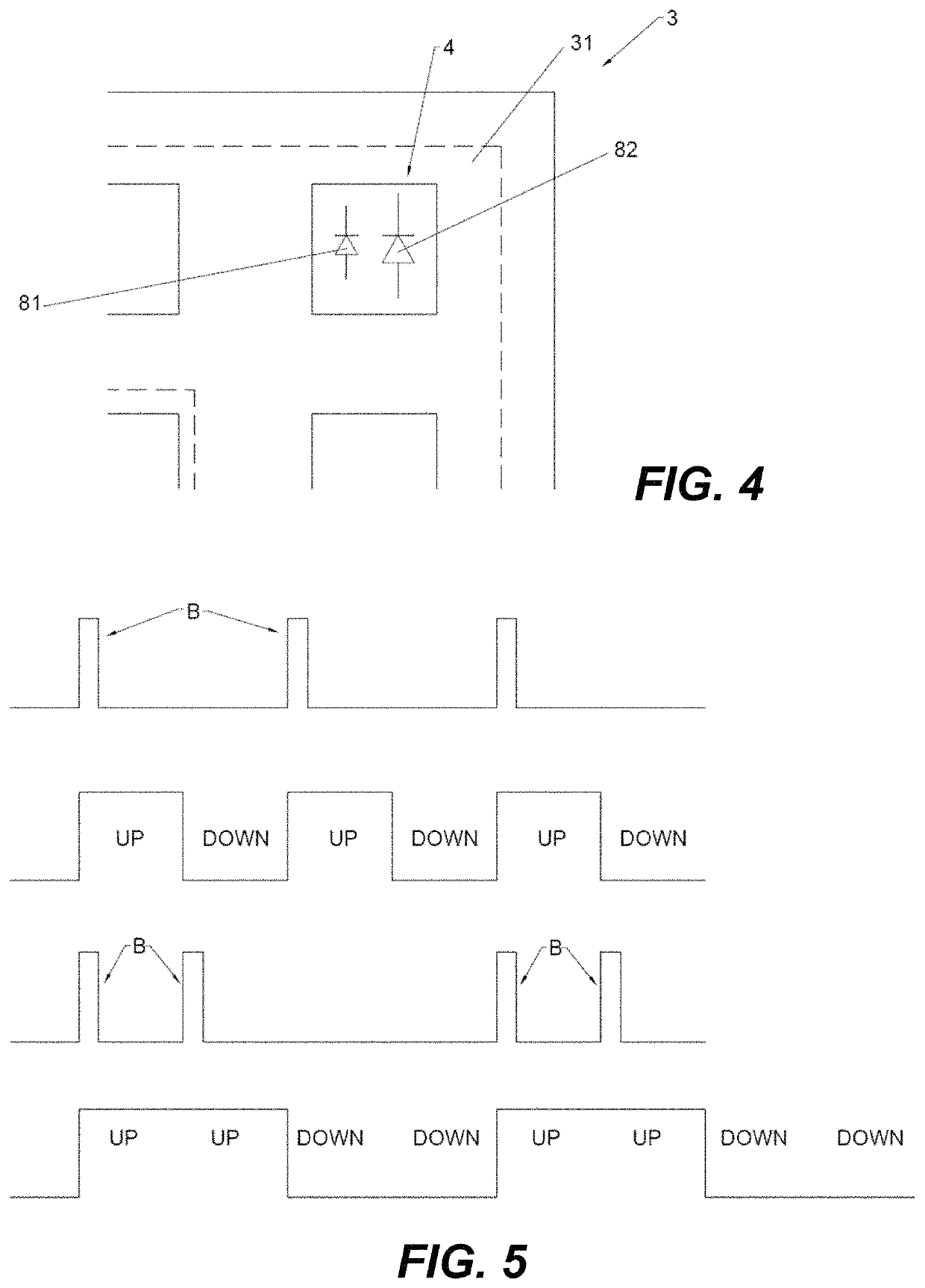Device for measuring a distance and method for measuring said distance
a technology for measuring devices and distances, applied in distance measurement, optical radiation measurement, instruments, etc., can solve the problems of excessive cost of this solution, excessive loss of useful information, and difficulty in implementation of the architecture just described above, and achieve high static and dynamic fill factor, reduce size, and high precision
- Summary
- Abstract
- Description
- Claims
- Application Information
AI Technical Summary
Benefits of technology
Problems solved by technology
Method used
Image
Examples
Embodiment Construction
[0045]The measuring device that is the subject of the invention and is suited to measure the distance d of a reference object O, or of a plurality of reference objects O, is represented in FIG. 1, where it is indicated as a whole by 1.
[0046]As explained below, the measuring device 1 is configured to carry out in succession a plurality of measuring operations Ai for the purpose of determining the value of said distance d with great precision.
[0047]As shown in FIG. 1, the measuring device 1 of the invention comprises emission means 2 suited to emit light radiation R directed towards the reference object O during a predetermined time interval I for each one of said measuring operations Ai in sequence.
[0048]Said plurality of measuring operations Ai in sequence is illustrated in the time chart shown in FIG. 2.
[0049]According to the preferred embodiment of the invention, said emission means 2 are configured to emit, at each time interval I related to each one of the measuring operations A...
PUM
 Login to View More
Login to View More Abstract
Description
Claims
Application Information
 Login to View More
Login to View More - R&D
- Intellectual Property
- Life Sciences
- Materials
- Tech Scout
- Unparalleled Data Quality
- Higher Quality Content
- 60% Fewer Hallucinations
Browse by: Latest US Patents, China's latest patents, Technical Efficacy Thesaurus, Application Domain, Technology Topic, Popular Technical Reports.
© 2025 PatSnap. All rights reserved.Legal|Privacy policy|Modern Slavery Act Transparency Statement|Sitemap|About US| Contact US: help@patsnap.com



